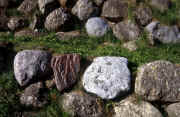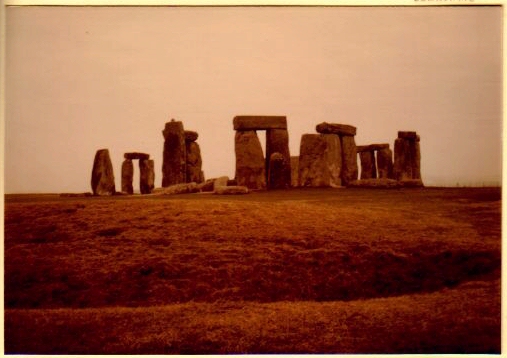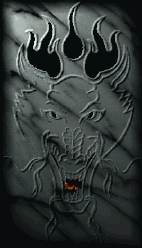 (Stone Circle Home Page)
(Stone Circle Home Page)
 Stonehenge
Stonehenge
 (Zorger)
(Zorger)The Stonehenge monument is a historical British landmark in Wiltshire, England, believed to be thousands of years old. It was erected from ancient-formed structures known as dolmens, or standing stones and a flat-roof of stone. The mythology and history surrounding Stonehenge is legendary, but one modern theory suggests that it was once used for either the placement of tombs or as a pagan pathway for the dead.
According to the Welsh chronicler Geoffrey of Monmouth, “a historian of the 12th century, who wrote a book titled The History and Topography of Ireland,” the Arthurian wizard Merlin engineered the building of Stonehenge in Ireland, where it was originally erected after the stones were brought over from Africa by giants. (World-Mysteries) According to the legend, the rocks were retrieved from Ireland through a great war, in which they were fought over for their value as healing stones and as monuments to fallen British warriors in the period of the Arthurian kingdom. The World Mysteries website suggests that this legend is largely considered historical fiction as archaeological evidence suggests a construction date that does not coincide with the Arthurian kingdom (if such a kingdom did indeed exist). It also states that “Stonehenge is angled such that on the equinoxes and the solstices, the sun rising over the horizon appears to be perfectly placed between gaps in the megaliths.” (World-Mysteries) This lends weight to the theory that the monument was built as a sort of religious site, to serve pagan practitioners in their rites.
The official Stonehenge website says that Stonehenge itself was built in stages spanning at least 3,000 years (and some sources suggest as much as 5,000 years): “the Stonehenge that we see today is the final stage that was completed about 3,500 years ago.” (Official Stonehenge Site) These stages of construction included dragging heavy stones, “some weighing 4 tons each…on rollers and sledges to the headwaters on Milford Haven,” which is in Wales, “and then loading [them] onto rafts. They were carried by water along the south coast of Wales and up the rivers Avon and Frome, before being dragged overland again to near Warminster in Wiltshire,” which is in the southwest of England. (Official Stonehenge Site) Later, sarsen stones, hard rock tertiary sandstones which were found in large quantities in southern England, were added. These formed the larger standing-stones. The Stonehenge monument has undergone drastic changes in modern times due, in part, to development by the government in the area of Wiltshire and earlier public access that did considerable damage to the site (including graffiti on the stones themselves). A peace-sign in visible in the stone below:
 (Stone Circle Home Page)
(Stone Circle Home Page)
The architecture of Stonehenge is built around the erection of standing-stones known as dolmens. “The word ‘dolmen’ comes from the Breton [the language of Brittany, France, former Lesser Britain, closely related to Irish Gaelic] word ‘tolmen’ which means ‘stone table’.” (Geography In Action) The standard dolmen was a structure consisting of upright stones which hold up a flat-table roof. What remains of the dolmens of Stonehenge can be seen below:
 (Stone Circle Home Page)
(Stone Circle Home Page)
In relation to the Stonehenge monument, the dolmen structures further suggest that the monument was put to use in ancient times as a place for pagan worship, perhaps to worship the dead. As seen in both the historical legend of the building of Stonehenge (by Merlin), the lament of The Wanderer, and the epic poem Beowulf, the loss of warriors was considered, culturally, a great tragedy in ancient times. Considering the fact that “excavations have revealed cremated human bones in some of the chalk filling” of some of the stones, it is worth considering that Stonehenge itself was used as a site to mourn the loss of soldiers, and aid them in crossing over into the afterlife. (Official Stonehenge Site)
This is a clearer image of what the Stonehenge Monument looks like today!Icons Cited:
(Stones) Free Images (Switzerland) "Stones" 10 May 2008. http://www.free-pictures-photos.com/stones/index.htm
(Silver dragonhead) Draconian.com "Dragon Animations" 10 May 2008. http://www.draconian.com/artwork/anim/animation.htm
 Return to Main Page!
Return to Main Page!